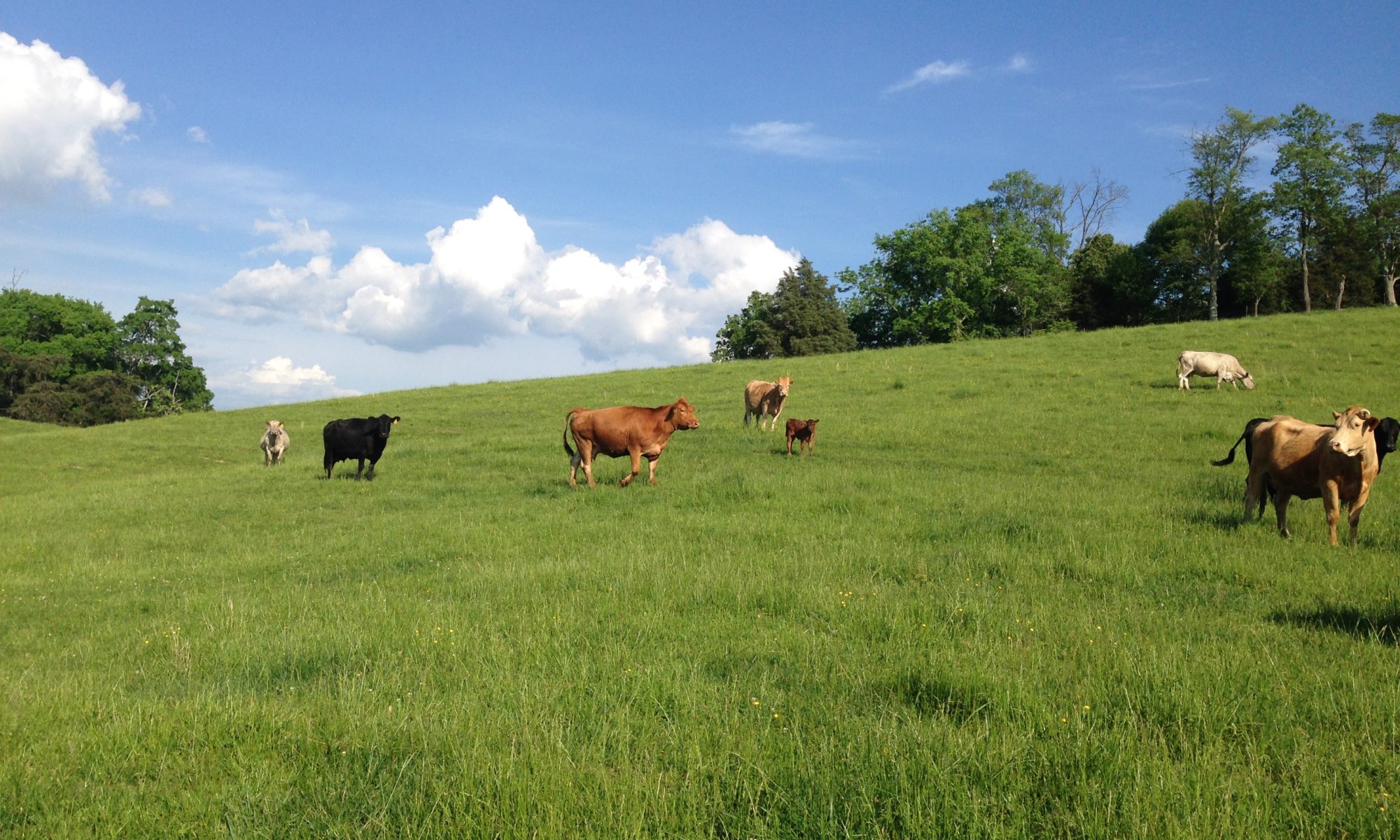

Dr. Troy Rowan
Assistant Professor
UTIA Genomics Center for the Advancement of Agriculture
P: 865-974-3190
Sustainability is a word that gets about as many reactions as it has definitions. This is true in the cattle business and beyond. Unfortunately, the conversations in our industry surrounding sustainability popped up about the same time we were under fire for “cow farts killing the climate.” This causes many of us to bristle up at the mention of sustainability. That’s a shame because we are in an excellent position to demonstrate and showcase our efforts to deliver high-quality protein while being good stewards of the natural environment. If we don’t tell our story and present the facts, someone else will. The beef industry is as efficient as ever, and I would argue that efficiency, sustainability, and profitability all go hand-in-hand. The practices that help make our cattle more efficient will also likely decrease their modest environmental impact.
Beef Production’s Environmental Impact
Much of the sustainability conversation centers around the emission of greenhouse gases (GHGs) by cattle. This gas emission is a byproduct of the attribute that makes cattle special. Cattle can convert human-inedible forage into energy due to a fermentation process performed by the microbes in their rumen. Methane, a known GHG, is a byproduct of this process. Despite all of the flack that our industry gets for its environmental footprint, beef production (from cow-calf production to consumer consumption) accounts for only about 2.5% of domestic GHG emissions [1]. Further, discoveries regarding the longevity of methane in the atmosphere are likely to shrink that impact even further [2].
On top of cattle’s modest GHG emissions, grasslands in the U.S. and worldwide are critical for carbon fixation, putting atmospheric carbon back into the soil. In conjunction with the most efficient cattle industry in the world, American beef production is close to “net-zero” emissions. Additionally, producers around the country are striving to improve soil health, maintain clean water sources, and bolster grassland ecosystems. This is a lot of words to say that cows aren’t the problem! They’re a part of the solution! Mandates that reduce the number of cows in other highly-efficient countries (see Ireland [3]) are counter-productive. With constant beef or dairy demand, that merely shifts production to a less efficient system, making global production less sustainable. While I don’t anticipate that happening in America, it proves that we must be vigilant about telling our story and holding up facts.
Other Definitions of Sustainability
I think that it’s helpful to frame sustainability a bit more broadly, though. Depending on where you are in the country, there is always some “limiting factor” to cattle production. Out West, that might be water, while in Tennessee, it might be affordable pasture land due to urbanization. Our industry’s sustainability relies on the effective utilization of these limited resources. For example, rotational grazing might allow us to run a couple of additional cows or reduce our hay-feeding period by a few weeks. No matter how you slice it, that’s a sustainability win because we’re doing more with less.
The other way that I like to frame sustainability is from a longevity perspective: How long will we be able to keep raising beef cattle? The beef industry has benefitted from slightly larger margins than our dairy, pork, and poultry counterparts. This has allowed us to pick and choose which best practices get integrated versus ignored. As our costs of production increase and the weather & markets become more volatile, our ability to respond to change will become even more difficult. Adopting technologies and making decisions that reduce costs while maintaining productivity will be essential. Crossbreeding comes to mind here as a practice that can immediately help. The heterosis generated through crossbreeding increases our pounds of weaned calf and replacement female productivity at zero additional cost. Again, allowing us to do more with less, ensuring the sustainability of our industry into the future.
Telling our Story
Looking into the future, I don’t see a situation where beef production won’t be under fire from outside sources concerning sustainability. As we engage in these conversations, I think our efficiency increases are the best evidence that we can hold up. Improvements to genetics, nutrition, health, and management practices have all increased the performance of our calves, the longevity of our cows, and the quality of our end product. Our industry is sustainable and continues to improve. The criticism we receive as an industry seems unfair, but telling our story and presenting the facts is imperative. The Beef Checkoff invests in research and consumer outreach to do this [4].
Our industry is strong, efficient, and sustainable. We are doing more with less, which is a story worth telling!
[1] https://www.beefresearch.org/programs/beef-sustainability/sustainability-quick-stats/emissions
[4] https://www.beefresearch.org/programs/beef-sustainability